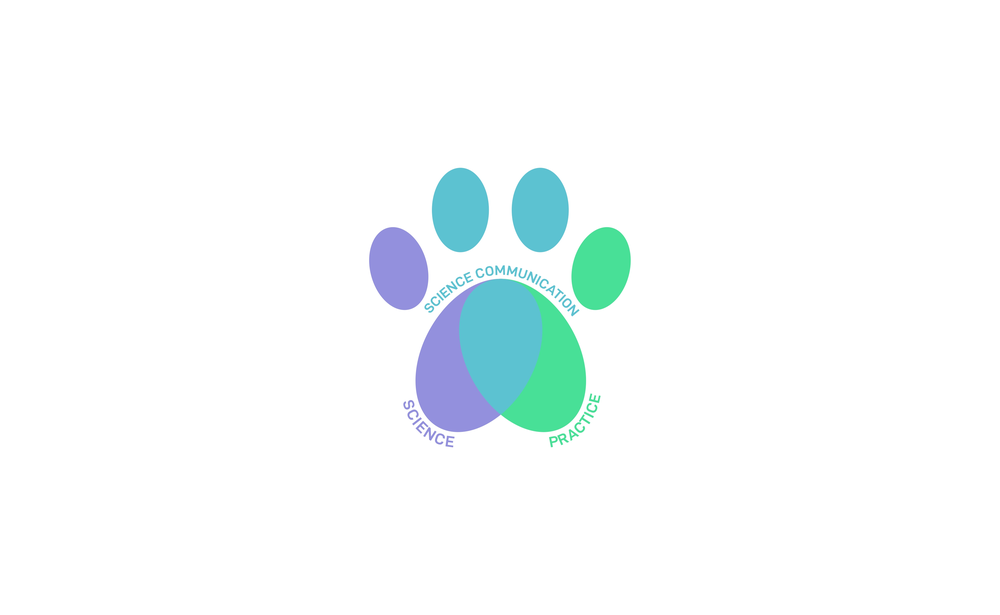Table of Contents:
Understanding the Power of Choice in Your Dog's Life
Imagine a world where your every move is dictated; where the joy of choosing is a foreign concept. This is often the reality our canine companions face. By understanding the power of choices in your dog's life, we can revolutionize their day-to-day experiences. Offering choices is akin to empowering your dog with a voice, allowing them to express their preferences and aversions, which leads to a richer, more fulfilling life.
From the basics like selecting between two snacks or deciding which toy to play with, to more complex decisions such as choosing the direction of a walk, these choices contribute to a dog's emotional and cognitive stimulation. It nurtures their decision-making skills, which can enhance their adaptability and problem-solving abilities. When dogs are allowed to make decisions, they engage in a form of self-expression that is crucial for their mental health.
Furthermore, providing choices can strengthen the bond between a dog and its owner. When humans acknowledge and respect their dog's selections, it creates a mutual understanding and respect. It reassures the dog that their signals are heard and valued, which can reduce anxiety and build a stronger, trust-based relationship.
By weaving choices into the fabric of our dogs' lives, we are not just accommodating their needs, but actively fostering a sense of agency. This practice of offering choices should not be an occasional luxury but a consistent component of their daily routine, giving each dog the best opportunity to thrive both mentally and physically.
The Psychological Benefits of Allowing Dogs to Make Choices
Providing our dogs with the opportunity to make choices has a profound impact on their psychological health. Much like humans, dogs benefit from a sense of autonomy. This autonomy can lead to reduced levels of stress and anxiety as they feel more in control of their environment and daily lives. When dogs are offered choices, it supports their natural inclination for exploration and discovery, crucial elements for a content and stimulated mind.
The act of making a decision involves mental processing, which in turn keeps a dog's mind active and alert. It is the equivalent of giving them a mental workout, pushing them to analyse situations and consider outcomes before making a choice. This process can promote cognitive health, potentially staving off the decline in mental acuity as they age.
Dogs that are deprived of choice may display signs of depression or apathy. However, when given options, these same dogs often exhibit an increase in positive behaviours, such as playfulness and social interactions. This improvement is a clear indicator of a dog's enhanced psychological state.
Regularly allowing choices also helps to build a dog's confidence. As they learn that their actions can influence their surroundings and achieve desirable outcomes, they become more self-assured and less reliant on their human companions for constant guidance.
How Choices Enhance Canine Welfare and Well-being
When we talk about canine welfare, the ability to choose is a fundamental yet often overlooked element. Choices inherently enhance a dog's quality of life by catering to their instinctual desires, such as sniffing out an exciting scent or settling down in their preferred resting spot. These options are crucial for a dog’s overall well-being, providing them with a sense of control over their environment and comfort that can prevent frustration and behavioural issues.
A dog's well-being is multifaceted, encompassing physical health, mental stimulation, emotional satisfaction, and social needs. By offering a variety of choices, we positively influence all aspects of their welfare. For instance, allowing a dog to choose when and how to exercise can help in maintaining their physical health at optimum levels. Furthermore, by making choices in interactive games or puzzles, a dog can benefit from mental challenges that ward off boredom and encourage intellectual growth.
Moreover, the social dimension of a dog’s life can be enriched through choices. When a dog is allowed to interact with other dogs at their own pace and comfort level, it supports positive socialisation and aids in the development of social skills. This freedom to choose can mitigate aggression and fear, leading to a well-adjusted dog capable of forming stable relationships with both humans and other dogs.
In conclusion, integrating choices into routine care is not just about enhancing a single aspect of a dog's life; it’s about elevating their entire existence. Embracing this approach can lead to well-rounded individuals who are happier, healthier, and socially adept.
The Ethical Duty of Providing Choices to Our Dogs
As guardians of our dogs, we bear an ethical responsibility towards their well-being. Recognising that dogs have preferences and providing them with opportunities to express these preferences is a matter of ethical duty. It ensures that we are not merely owners, but rather, compassionate stewards of their lives. Respecting their need for choice is part of acknowledging their sentient nature.
It's essential to consider that dogs, too, are beings with desires and needs distinct from our own. They are not mere possessions or tools to be controlled at whim. They are partners in life's journey, deserving of respect and consideration. By offering choices, we validate their inherent worth and their right to a life filled with enrichment and happiness.
The ethical approach to dog care involves more than meeting their basic needs for food, shelter, and health care. It encompasses granting them autonomy over their lives to the greatest extent possible. Such practices align with the evolving view of animals as individuals with moral significance.
Despite the challenges it may sometimes pose, empowering our dogs with choices reflects a progressive, humane philosophy. It stands as a testimony to the depth of our relationship with our canine friends and our dedication to their intrinsic value.
Safety Considerations When Giving Dogs Choices
While offering choices is key to enhancing our dogs' lives, we must also consider their safety. Providing choices does not mean allowing risky behaviours or putting our dogs in harm's way. It is about finding the right balance between freedom and security. Responsible pet ownership involves foreseeing potential dangers and setting boundaries within which dogs can safely make choices.
For example, when deciding on their movement, dogs should be allowed to explore in secure areas where they are not at risk of traffic or other hazards. This might mean choosing a safe, enclosed space for off-leash play or using a long lead in open areas to ensure they can’t run into harm’s way. It's about offering options within a framework that protects them from physical injury or escape.
Another critical safety consideration is the introduction of new foods or objects. Dogs may not inherently know what is safe to ingest or interact with. Therefore, the choices presented to them should be free from items that could cause choking, poisoning, or other health issues. It’s crucial to offer options that have been vetted for safety.
In essence, while empowering dogs with choices, we must be their guide, ensuring that the autonomy we provide doesn't expose them to unnecessary risks. This thoughtful approach to offering choices establishes a trustful bond, where dogs can enjoy their freedom with the reassurance of their safety being a top priority.
Practical Tips for Integrating Choices into Your Dog's Routine
Incorporating choice into your dog's daily routine doesn't have to be complex or time-consuming. Start with small, manageable adjustments that can have a significant impact on your dog's sense of independence and joy. Let's explore some practical tips to get started:
- Mealtime variety: Mix up their diet by offering different food options, ensuring each is nutritious and safe. A choice between proteins or the option to pick from a selection of healthy treats can make mealtime exciting.
- Interactive toys: Rotate their playthings to keep things fresh. Puzzle toys, in particular, allow dogs to exercise choice in how they interact with them, providing mental stimulation and entertainment.
- Walking liberty: During walks, occasionally let your dog choose the path. If they want to pause and sniff a tree or take a new trail, let them lead the way as long as it's safe.
- Resting spots: Provide multiple comfortable resting areas around the home. Dogs will appreciate the ability to choose a quiet corner or a sunny spot depending on their mood.
These simple steps empower your dog to make decisions throughout the day, fostering a more engaging and satisfying environment. With time, you'll notice your furry friend expressing clear preferences, a sign of their contentment and trust in you as their caring human.
Navigating the Challenges of Offering Choices to Dogs
Offering choices to our canine companions is not without its challenges. Some dogs may be overwhelmed or hesitant when presented with multiple options, especially if they are not accustomed to making choices. It’s important to introduce choices gradually and to observe your dog's reactions, ensuring that the process is a positive one.
One challenge might be a dog making a choice that seems unusual or concerning, such as consistently choosing a solitary spot away from family interaction. This behaviour could signal that the dog is stressed or unwell and requires further attention. It's imperative to monitor and evaluate the choices your dog makes to provide appropriate care and support.
Another difficulty arises when a dog’s choice conflicts with its human’s expectations or desires. In such instances, patience and understanding are needed. For example, if a dog chooses to play with a less stimulating toy, rather than trying to redirect their attention, it may be more beneficial to respect their decision and learn from it.
Understanding that choices should be guided and informed is key. Present your dog with options that are both appealing and acceptable to you as the owner, ensuring a happy medium where their desire for autonomy is respected without sacrificing safety or proper care.
Success Stories: The Positive Impact of Choices on Dogs
There are numerous inspiring success stories that highlight the transformative effect that offering choices can have on a dog's life. Consider Max, a rescue dog who initially showed signs of timidness and disinterest. When his adoptive family began to offer him simple choices such as selecting his own toys and choosing between different walking routes, Max blossomed into a confident and enthusiastic companion.
Then there's Bella, a formerly reactive dog who struggled with anxiety. Her breakthrough came when her owners started implementing consent-based training methods, allowing her to signal when she was uncomfortable proceeding with an activity. This choice to 'opt-out' led to a remarkable reduction in her stress levels and a significant improvement in her behaviour.
In a similar vein, the story of Toby, an older dog with mobility issues, reminds us of the importance of choices in providing comfort. By offering Toby various bedding options around the house, his owners allowed him to choose where he could rest most comfortably, which helped him manage his discomfort and maintain a happy demeanour.
These stories are a testament to the benefits that choices can provide in enhancing a dog's quality of life, building their confidence, and mitigating behaviour issues. They serve as powerful examples for dog owners everywhere to follow suit in empowering their pets through choices.
Conclusion: The Vital Role of Choices in Fostering a Happy, Healthy Dog
In closing, the role that choices play in nurturing a happy and healthy dog cannot be overstated. As we've explored, enabling our dogs to make choices touches on every aspect of their well-being. It contributes to their psychological health, enriches their welfare, aligns with our ethical obligations, and when done with safety in mind, can deepen the bond we share with our pets.
By introducing and respecting our dogs' ability to choose, we empower them to live more fulfilled lives. We allow them room to grow, to express individuality, and to participate in their own care. This, in turn, fosters a robust, trusting relationship between dog and owner, built on mutual respect and understanding.
So, as we continue our journey with our canine companions, let us remember the power of choice. By conscientiously offering our dogs the freedom to make decisions—simple or significant—we pave the way for their total well-being. Start with small steps, remain patient, and watch as your dog thrives, confirming that the best guardianship is one that cherishes a dog's individuality and honours their right to choice.








